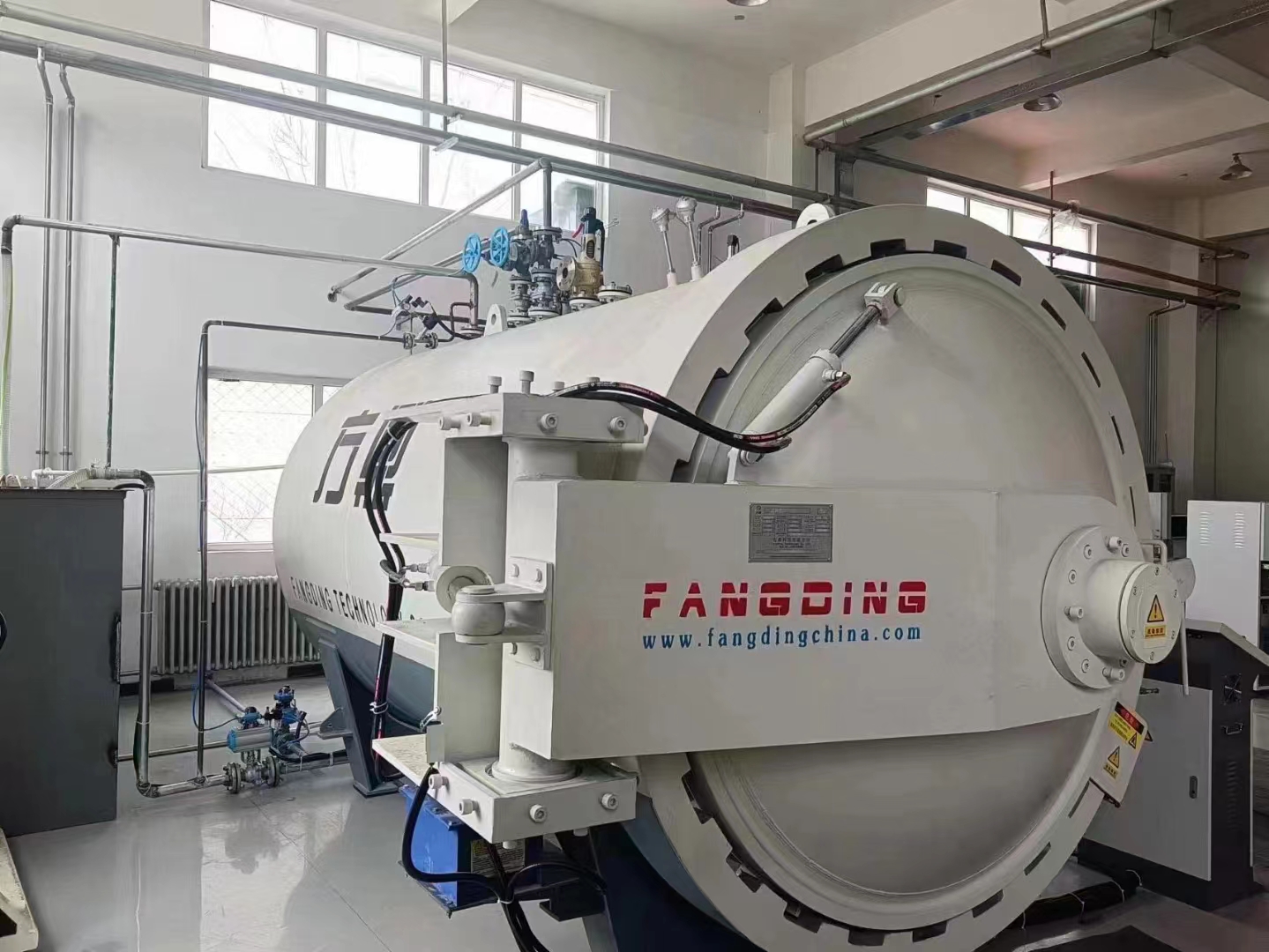Laminated glass autoclave forced convection glass autoclave adopts a pressure vessel heated by double convection heating in the upper and lower circulation and front and rear circulation, and adopts PID control, which can realize the accurate control of temperature and pressure, so that the temperature and pressure can be changed completely according to the design curve. It is suitable for the synthesis of laminated glass for various process requirements. In particular, the interlayer film is PVB or SGP material products, and can guarantee perfect product quality and yield.
Technical features:
| LAMINATED GLASS AUTOCLAVE | |||
| Name | Units | DN2860*6000 | DN3000*6000 |
| Inner diameter | mm | 2860 | 3000 |
| Glass length | mm | 6000 | 6000 |
| Max.glass size | mm | 2440*6000 | 2600*6000 |
| Max.press | Mpa | 1.5 | 1.5 |
| Max.temp | ℃ | 160 | 160 |
| Operating press | Mpa | 1.3 | 1.3 |
| Operating temp | ℃ | 120~135 | 120~135 |
| Heating power | KW | 228 | 280 |
| Customization can be made according to the actual needs of customers | |||
The following glass autoclave manufacturers have summarized the following precautions for the use of enterprises for reference:
1. Read the manual carefully before use, and check the instrument: check whether there are traces of damage to the glass kettle and whether the interface is consistent. The interface should not be tightened too tightly, and the loose and active connection should be checked regularly to avoid long-term locking and causing the connector to bite to death
2. Wipe each interface with a clean soft cloth, apply a little vacuum grease at the interface (vacuum grease must be covered after use to prevent dust from entering), and rotate the interface to make the vacuum grease at the interface even.
3. Turn on the power switch to let the machine run from slow to fast, and make the machine stop when it stops, and then turn off the switch. When doing any repair or inspection, the machine must first cut off the power supply and water source.
4. The PTFE switch in various places should not be tightened too hard to avoid damaging the glass. After the shutdown, loosen the PTFE switch, and the PTFE piston will be deformed if it is stationary for a long time.
5. Remove the sealing ring, check whether there is dirt on the shaft, wipe it clean with a soft cloth, then apply a little vacuum grease, and reinstall it to keep the shaft and the sealing ring slippery. Clean the seals regularly
6. When replacing parts, the original accessories produced by the original factory must be used, and the use of other accessories at will will cause fatal damage to the machine.
7. After using the glass autoclave, you must use a soft cloth to wipe off the oil stains, stains, and solvent residues left on the surface of the machine, and keep it clean.
In addition to the correct use of glass autoclave, we should also do the corresponding maintenance work, to prevent corrosion and deformation, in addition to the corresponding safety protection work, when purchasing equipment, we should also buy from the regular pressure vessel manufacturer, beware of unqualified equipment caused by accidents.


Post time: Mar-22-2025
